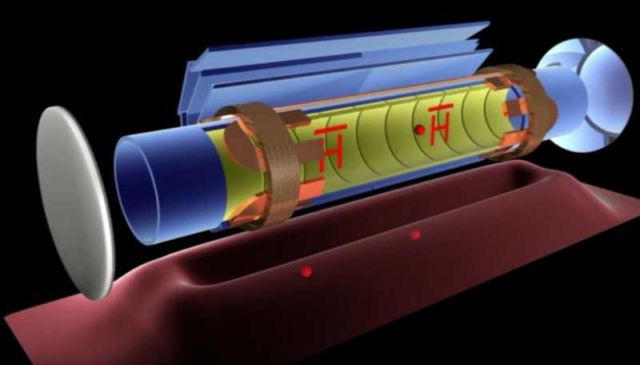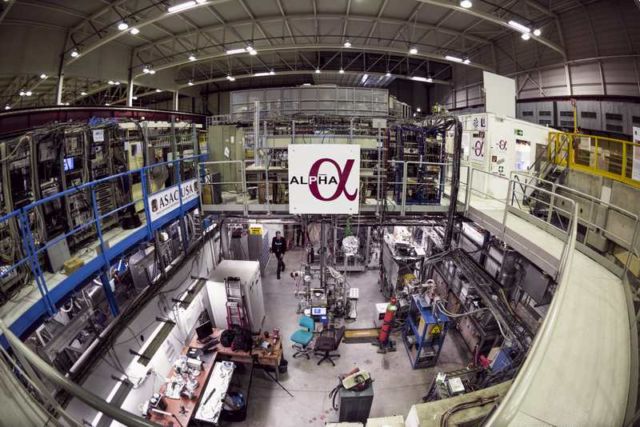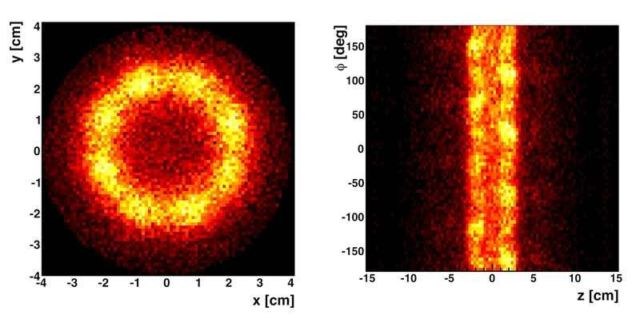The ALPHA experiment observes light spectrum of antimatter for the first time.
ALPHA is an antimatter experiment set up in late 2005. It captures and studies atoms of antihydrogen and compares these with hydrogen atoms.
In a paper published today in the journal Nature, the ALPHA collaboration reports the first ever measurement on the optical spectrum of an antimatter atom.
This achievement features technological developments that open up a completely new era in high-precision antimatter research.
It is the result of over 20 years of work by the CERN antimatter community.
Measuring the antihydrogen spectrum with high-precision offers an extraordinary new tool to test whether matter behaves differently from antimatter and thus to further test the robustness of the Standard Model. Credit Maximilien Brice/CERN
“Using a laser to observe a transition in antihydrogen and comparing it to hydrogen to see if they obey the same laws of physics has always been a key goal of antimatter research,” said Jeffrey Hangst, Spokesperson of the ALPHA collaboration.
When antimatter touches regular matter, it annihilates in a flash of light. These images show anti-hydrogen atoms annihilating as they come into contact with the walls of the ALPHA experiment, which are made of ordinary matter. Credit CERN
source ALPHA








Leave A Comment